Call and Book Your Hotel Now!
Domestic Toll-Free for US and Canada: 1-800-997-1438
Worldwide: +1-817-983-0682
Rio de Janeiro is a city of astonishing sights and iconic landmarks. Christ the Redeemer, atop Corcovado Mountain, offers awe-inspiring views of the city. The Copacabana and Ipanema beaches are bustling with activity; the Lapa Arches light up the night.
The charming Santa Teresa neighborhood boasts colonial-era charm, and Maracanã Stadium embodies Brazil's soccer passion. Nature lovers can explore the Botanical Gardens and Tijuca National Park. The Sambadrome comes alive during Carnival.
Aerial views and cruises in Rio de Janeiro offer a unique perspective of the city's stunning landscape. Helicopter tours provide spectacular vistas of landmarks like Christ the Redeemer and Sugarloaf Mountain. Hang gliding and paragliding adventures offer a bird's-eye view of Rio's coastline.
Cruises along Guanabara Bay and the nearby Ilha Grande showcase the city's beauty from the water. These experiences provide an unforgettable way to appreciate Rio's natural and architectural wonders, making for a revitalising and picturesque exploration of the Marvelous City.
Christ the Redeemer (Cristo Redentor) is an iconic statue of Jesus Christ in Rio de Janeiro, Brazil, atop Corcovado Mountain. This tall, colossal Art Deco monument, 98 feet (30 metres), symbolises Christianity and the city. With arms outstretched, it offers panoramic views of the city. Lightning frequently hits Christ the Redeemer. However, the statue’s lightning rods divert most of these strikes. A UNESCO World Heritage site and one of the New Seven Wonders of the World, the statue symbolises faith and is a must-visit landmark.
Petrópolis, often called the "Imperial City," is a charming Brazilian town in the mountains near Rio de Janeiro. It earned its nickname as the summer residence of Brazilian emperors in the 19th century. The town is known for its well-preserved historic architecture, lush gardens, and the Imperial Museum. It has a cold climate compared to Rio's tropical heat. It provides a glimpse into Brazil's royal history, making it a popular destination for history enthusiasts and those seeking a serene escape.
As the historical and financial hub, Rio's Centro (Central District) holds many jewels in its purse. Despite the bustling traffic and skyscrapers, the lanes provide an insight into how Rio was discovered and then consequentially developed in the years that followed. Narrow streets, ornate architecture, and historic landmarks such as the Candelária Church and Tiradentes Palace characterise it. The district is a cultural hub, housing museums, theatres, and the Sambadrome, where Carnival parades occur. It's a place where the old and the new coexist, offering a rich tapestry of history and contemporary urban life in the heart of the city.
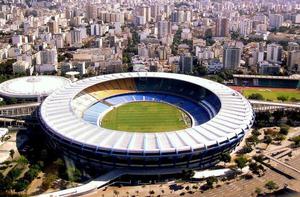
Maracanã Football Stadium, officially named Estádio Jornalista Mário Filho, is one of the most iconic football venues in the world. Located in Rio de Janeiro, Brazil, it has a rich history of hosting legendary matches and events. With a seating capacity of over 100,000 fans, it's the country's largest stadium and was the centrepiece of the 1950 FIFA World Cup. Football fans admire Maracanã, symbolising Brazil's passion for the sport.
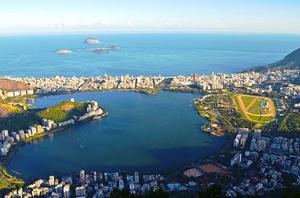
Rodrigo de Freitas Lagoon, or Lagoa Rodrigo de Freitas, is a picturesque saltwater lagoon in the heart of Rio de Janeiro. Surrounded by lush hills and upscale neighbourhoods, it offers a stunning backdrop for outdoor activities like jogging, cycling, and paddle boating. The Rowing Stadium of the Lagoon is a sports venue. It attracts many visitors during the Christmas holidays because of its famous and gigantic Christmas Tree, built over a floating platform that moves around the lagoon. It's a popular spot for locals and visitors seeking a serene escape within the bustling city.
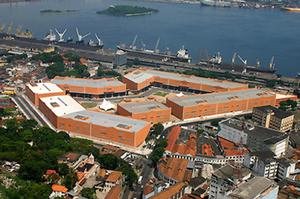
Samba City, or Cidade do Samba, is a vibrant cultural complex in Rio de Janeiro dedicated to the art of samba. It's a hub for the city's famous Carnival preparations, housing workshops for samba schools and featuring colourful exhibits on the history and traditions of Carnival. Visitors can immerse themselves in the spirit of Rio's most famous festival and witness the creative process behind the spectacular parades.
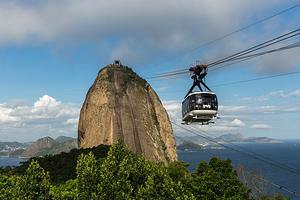
The Sugarloaf Cable Car is an iconic attraction in Rio de Janeiro, offering visitors a thrilling ride to the top of Sugarloaf Mountain. It is one of the oldest cable cars in the world. This two-stage cable car system provides breathtaking panoramic views of the city and its stunning surroundings. It's a must-visit destination for those seeking a bird's-eye view of Rio's natural beauty and urban landscape.
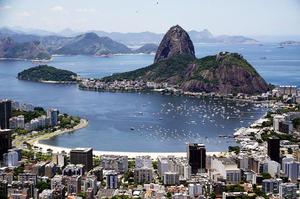
Sugarloaf Mountain, or Pão de Açúcar in Portuguese, is an iconic peak in Rio de Janeiro. Rising dramatically from Guanabara Bay, it offers panoramic views and stunning sunsets. It is named after the traditional sugarloaves used during the yesteryears. Accessible by cable car, it's one of the city's most famous landmarks and a must-visit for its breathtaking vistas of Rio's coastline, Christ statue, the green forests and beyond. The view is best appreciated on a clear, sunny day, so check the weather forecast before the visit.
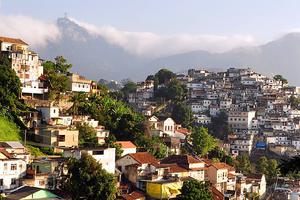
Santa Teresa is a charming neighbourhood in Rio de Janeiro known for its winding, hilly streets, colonial-era mansions, and artistic ambience. It's a bohemian haven filled with art studios, cultural events, and vibrant street art. Santa Teresa offers a unique blend of history, culture, and creativity, making it a beloved and picturesque escape from the city's hustle and bustle.